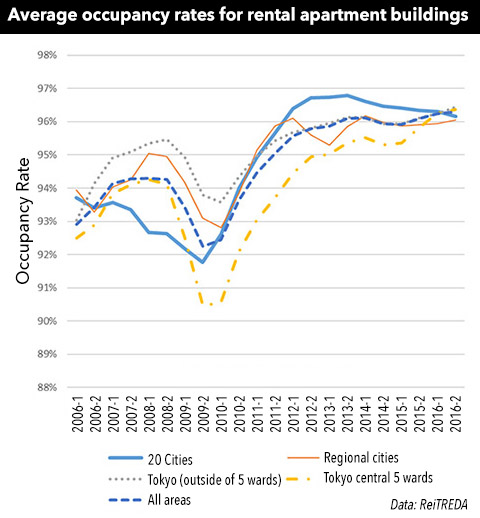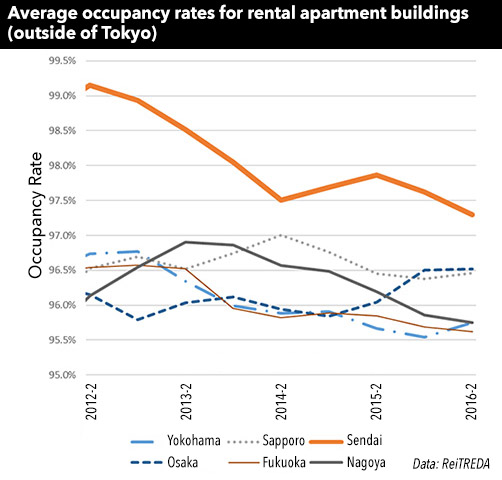Apartment occupancy rates reach record high in Japan

The average occupancy rate of rental apartment buildings acquired by J-REITs has been steadily improving since 2010 and has exceeded levels last seen during the peak in 2008. In the second half of 2016 the average occupancy rate was 96%, a record high.
This is due both to an improving property market and REITS acquiring relatively new buildings in prime, central locations. While occupancy rates remain high in Tokyo, other cities across the country are seeing a reversal with a declining trend evident since 2013.
Trends in cities other than Tokyo:
- Sapporo: Although occupancy levels are relatively high, they have been decreasing since late 2014.
- Sendai: Occupancy rates reached record highs due to housing demand following the Tohoku disaster in 2011, but have been slowly falling. Sendai has seen the highest decline of all cities.
- Yokohama: Occupancy has been falling since mid-2013, although there was an improvement in the second half of 2016.
- Nagoya: Occupancy rates have been falling since 2013 and are sitting at a comparatively low level.
- Osaka: Occupancy rates have been improving since late 2015 and are at a relatively high level.
- Fukuoka: Occupancy rates have been steadily falling. The rate of decline has been influenced by a building with an occupancy rate of less than 80%.

*Central Tokyo 5 wards: Chiyoda, Chuo, Minato, Shinjuku, Shibuya.
Source: Mizuho Real Estate Market Report, July 14, 2017.
